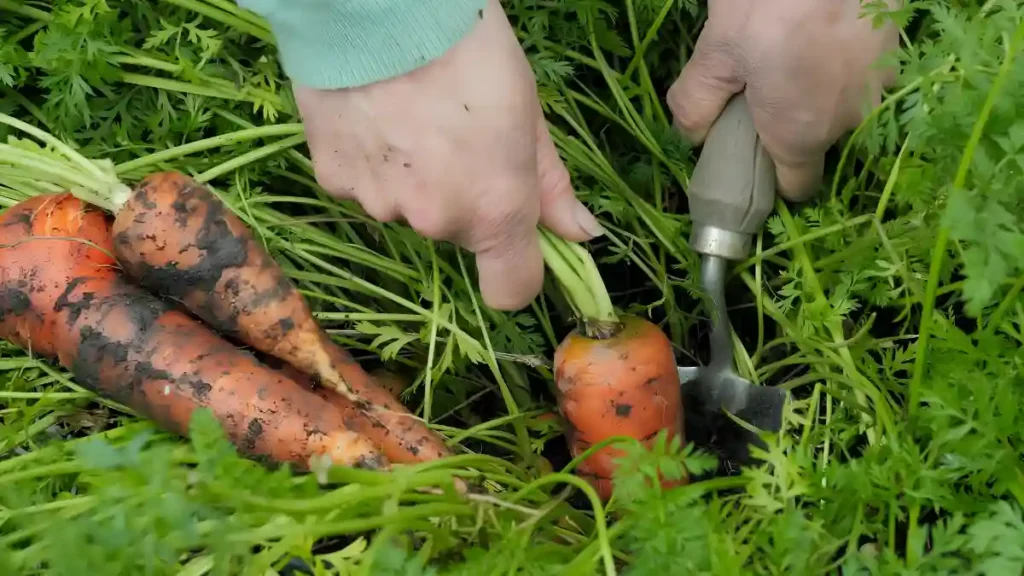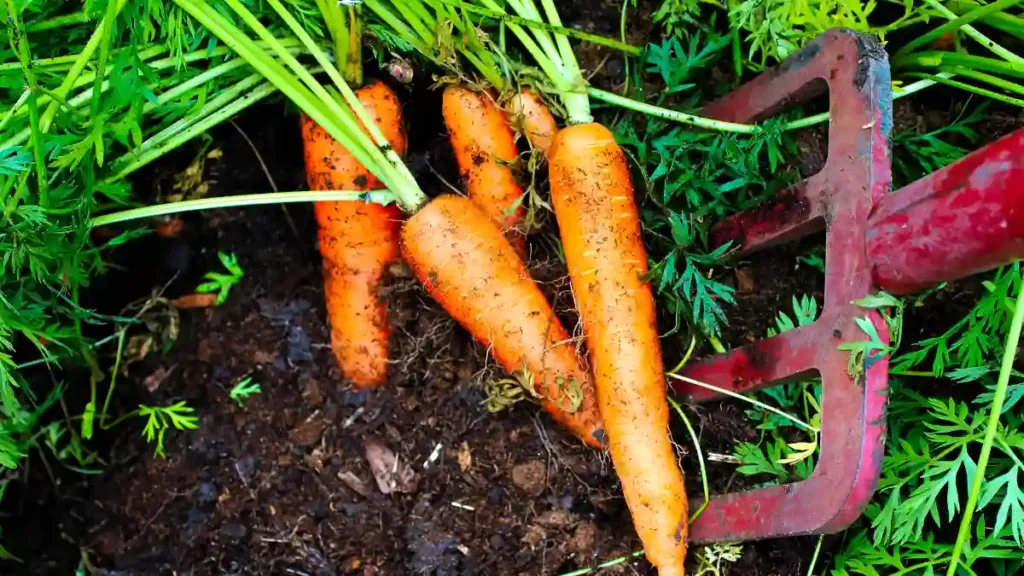A well-liked root vegetable, carrots are best recognized for their vivid orange hue, though they are also available in purple, yellow, red, and white forms. If you’re wondering how to grow carrots (Daucus carota), you ought to know that they thrive in cool conditions such as early spring and late fall. Growing carrots in your garden can be a wonderful experience. Carrots grown in-house have not only better flavor and texture, but you also have the assurance of knowing the specific farming practices used. Throughout, you can effectively grow carrots in containers. In this article, we’ll share professional advice on how to grow carrots, from selecting the appropriate seeds to harvesting a plentiful crop.
Select the proper type of carrots:
The first step of growing carrots is choosing the correct type of carrots. Carrots are available in a variety of sizes, shapes, and colors, and they grow well in a range of temperatures and soil types. Common variations consist of a few of the following:
- Danvers: Adapted to heavy soils and with tapered roots.
- Nantes: Carrots with a blunt tip and a cylindrical shape that thrive on sandy soils.
- Imperator: Slender, long carrots that are frequently grown for market.
- Chantenay: Stocky, short carrots that grow well in rocky or clay soils.
- Baby carrots: These smaller cultivars are ideal for pots and shallow soil.
When and how to grow carrots step by step: tips for growing carrots
- Carrots can be harvested early in summer by planting seeds two to three weeks before the final date of spring frost, and then waiting three weeks to plant again. For a fall harvest, seeds should be planted ten weeks before the first frost date, as carrots that develop in the fall are sweeter.
- Loosen the soil to 12 inches deep, clear the ground of stones and rubbish, and incorporate organic matter like compost or well-rotted manure. Carrots prefer light, nutrient-rich soils, so avoid fresh manure. Ensure the soil’s pH is between 6.0 and 6.8, and adjust with lime or sulfur if necessary. Avoid fresh manure to prevent hairy roots and branching.
- Sow carrot seeds directly into the garden, 2 inches apart and 1/4 inch deep, sparingly in shallow rows. Maintain a 12-inch spacing for easy weeding and root development. Soil should be kept moist until seeds germinate, which typically takes 10-21 days.

How to grow carrots with adequate care:
- Carrots require regular, deep watering, aiming for one inch per week. Waterlogging should be avoided since too-wet soil will cause carrots to rot. Proper soil drainage is crucial. Mulch the surrounding area with leaves or straw to keep the soil moist and cool. Water only when necessary and ensure proper drainage.
- Thin carrot seedlings are carefully at the base to avoid damaging nearby plants’ roots. Gradually thin carrots to avoid harming young ones, starting with the weakest ones to be removed first.
- Avoid applying too much nitrogen fertilizer, as it can promote top growth at the expense of root growth. Avoid too much phosphorous fertilizer, as it may cause root splits. Side dress carrot greens after reaching 4 inches height with organic fertilizer with minimal phosphorus and moderate nitrogen.
- Floating row coverings over carrot plants can prevent disease-carrying insects from biting or laying eggs, resolving pest and disease issues. Carrots don’t require pollination, so cover can be left on throughout the growing season. Rotating crops and eliminating weeds can also reduce pests.
How to harvest carrots:
The best flavor and texture come from knowing when and how to harvest carrots. When carrots are 1/2 to 1 inch in diameter, harvest them. Before removing the roots, loosen the soil surrounding them. By doing this, you can prevent uprooting the roots. After carrots are fully grown, don’t let them stay in the ground too long. When kept in the ground in hot weather, carrots can become bitter.

Conclusion:
Growing carrots may require some patience, but with the appropriate techniques and care, you may reap a plentiful harvest of crisp, delicious carrots directly from your garden. By choosing the right variety, preparing the soil properly, watering consistently, and managing pests, by following these steps you’ll learn how to grow carrots successfully.
Certainly! If you’d like to learn more, please consider following our WhatsApp Channel: Harvest Gardening
A frequently asked questions:
Q1: How to grow carrots in a raised bed?
A1: Make sure the soil in an elevated bed is loose, well-drained, and at least 12 inches deep before planting carrots. Keep the soil continually moist, sow seeds thinly, and thin out seedlings to give them room to thrive.
Q2: How to grow carrots at home without seeds?
A2: Using the cut tops of store-bought carrots, you may grow carrots at home without seeds. Just put the chopped tops in a shallow dish filled with water, position them in a sunny spot, and keep changing the water until the carrots start to take root before planting them in the soil. As an alternative, you can use the “regrowth” method, which involves directly inserting carrot scraps into the soil while the roots are still connected.



